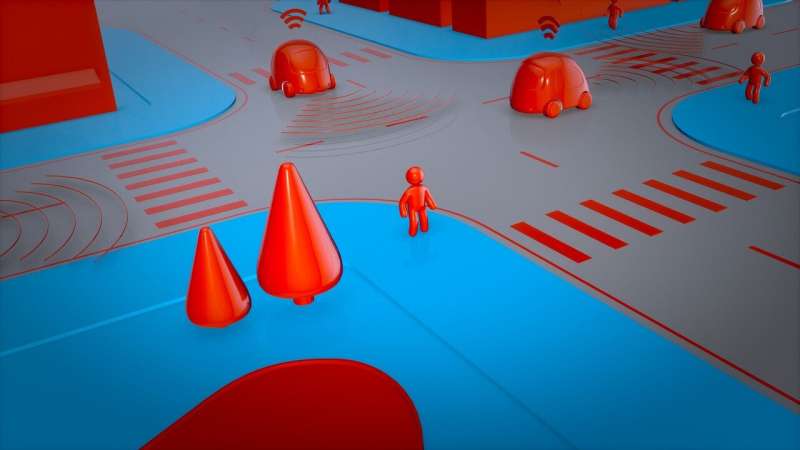This article has been reviewed according to Science X's editorial process and policies. Editors have highlighted the following attributes while ensuring the content's credibility:
fact-checked
trusted source
proofread
New algorithm helps robots avoid collisions

A new approach to autonomous robot navigation is reported in the International Journal of Computational Science and Engineering, which could help avoid collisions and accidents in a variety of future applications in various environments, such as industrial buildings and warehouses, agricultural fields, and in the urban self-driving vehicle landscape, search and rescue sites, in health care settings, and even in the home and garden.
Addressing the challenges of planning and motion control, crucial components in enabling robots to move safely and efficiently has been high on the research agenda for many years. Now, Jieyun Yu of the School of Mathematics at Jinan University, Guangzhou, China, has focused on two fundamental aspects to overcome the problems: enhancing control system performance and overcoming limitations in path planning.
Yu has achieved precise trajectory tracking, using a novel exponential feedforward-feedback control strategy based on iterative learning control (ILC) and model-free adaptive control (MFAC). Her approach improves trajectory convergence, reduces errors, and ensures accurate and repeatable robot motion.
The path-planning system also addresses the issue of collision avoidance by using the artificial potential field (APF) algorithm. In this obstacles along the robot's path are treated as repulsive forces within a virtual potential field, allowing the robot to navigate around them seamlessly. Yu has carried out simulations and validated the effectiveness of her approach and shown it to be more effective than traditional models.
Yu's approach could allow a robot or autonomous vehicle to find an appropriate and safe route much more quickly than other approaches, minimizing avoidable errors and opening up the possibility for robots to operate in complex and dynamic environments.
For example, the approach could be used to improve the behavior of autonomous vehicles allowing self-driving cars to navigate complex networks of roads safely and accurately. In warehouse and industrial automation, the system could improve logistics involving picking and sorting and moving goods and materials around a site. The system might also improve search and rescue robots allowing them to work more effectively in disaster zones and navigate hazardous environments. Out in the fields, agricultural robotics will benefit too, with more efficient plowing, planting, irrigation, monitoring, and harvesting.
More information: Jieyun Yu, Research on mobile robot path planning and tracking control, International Journal of Computational Science and Engineering (2023). DOI: 10.1504/IJCSE.2023.132164


















